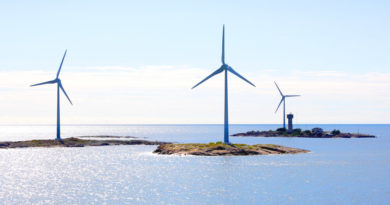Amazon’s Carbon Footprint grows 15% With Active Green Pledges

Global e-commerce major Amazon has announced that its carbon footprint rose 15 percent even as the firm launched several initiatives to reduce its harm on the environment. The firm revealed that it emitted 51.17 million metric tons of carbon dioxide last year, the equivalent of 13 coal-burning power plants running for a year.
That’s up from 2018 when it emitted 44.4 million metric tons of carbon dioxide. Amazon disclosed its carbon footprint for the first time last year after employees pressured the company to do more to combat climate change.
But the increase in its carbon foot shows how tricky it is for a rapidly-growing company like Amazon to cut down on pollution. Amazon depends on fuel-guzzling planes and trucks to ship billions of items a year around the world. Emissions from fossil fuels rose 18 percent last year, Amazon said.
Orders have increased during the coronavirus pandemic, as more people are stuck at home and are shopping online. To keep up, and deliver on time, Amazon said earlier this month that it leased 12 additional Boeing 767s, bringing its fleet of jets to more than 80.
Amazon said that while its carbon footprint grew, the amount of carbon it emitted for every dollar spent on the site fell 5 percent between 2018 and 2019.
The Seattle-based company also said it’s on track to have 100 percent of its energy use come from solar panels, wind turbines and other renewable energy by 2025, five years earlier than it had planned. This news came with the announcement of the launch of its new Climate Pledge Fund to support the development of sustainable technologies and services that will enable Amazon and other companies to meet The Climate Pledge—a commitment to be net-zero carbon by 2040.
This dedicated venture investment program—with an initial USD 2 billion in funding—will back visionary companies whose products and services will facilitate the transition to a zero-carbon economy.
Last year, the firm had, along with Global Optimism, founded The Climate Pledge, a commitment to reach the Paris Agreement ten years early and be net-zero carbon by 2040. The fund will invest in companies in multiple industries, including transportation and logistics, energy generation, storage and utilisation, manufacturing and materials, circular economy, and food and agriculture.
Source: saurenergy.com




